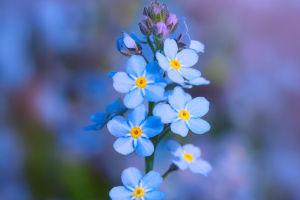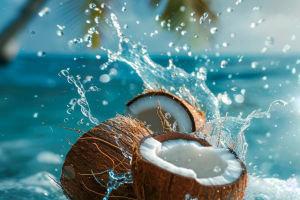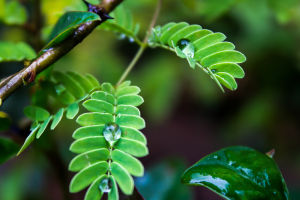Exploring plants that thrive in arid, harsh environments reveals remarkable stories of adaptation and survival. Our Lykkers will discover how nature crafts beauty and strength in the most unlikely places, from blazing deserts to volcanic slopes.
Among these marvels stands the desert rose, a succulent that, along with other desert natives, offers stunning blooms and fascinating characteristics despite tough conditions.
Desert Plants: Masters of Adaptation
Survival Strategies
Desert plants have evolved exceptional features to endure scarcity of water and intense sunlight. Deep roots tap underground moisture, while thick, fleshy leaves store water to prevent dehydration.
Many have a waxy coating that reflects sunlight and reduces evaporation. Some even produce aromatic oils serving as natural sunscreens.
Where to Find Them
These plants are native to deserts and semi-arid regions such as the Sahara, Arabian deserts, southern Africa, southwestern United States, and parts of Mexico. Some also grow in Mediterranean coastal areas, sandy shores, and volcanic slopes.
Notable Desert Plants and Their Characteristics
Desert Rose (Adenium obesum)
This perennial succulent, often mistaken for a flower or mineral formation, features thick, swollen trunks that store water and nutrients. It blooms with elegant white or pink flowers resembling those of plumeria or oleander.
Native to southern Sahara, tropical Africa, and Arabian regions, the desert rose is sometimes grown as a bonsai. Despite its beauty, it is important to note that the plant is toxic if ingested.
Joshua Tree (Yucca brevifolia)
Commonly found in the southwestern United States, particularly California's Joshua Tree National Park, this iconic plant has spiky, sword-shaped leaves. It is well-known for its dramatic silhouette and resilience in desert conditions. Its name traces back to 19th-century settlers who imagined its limbs reaching upward like a symbolic gesture.
Aloe
Aloe species are evergreen succulents recognized for their medicinal and cosmetic benefits. With serrated, fleshy leaves often lined with white teeth, they produce tubular or bell-shaped flowers that hang downward. Widely cultivated, these plants have been valued for centuries across many cultures for skin and health treatments.
Prickly Pear Cactus (Opuntia ficus-indica)
Found in hot, dry climates including southern parts of Europe and the Americas, this cactus produces edible fruits known as prickly pears. The fruits vary in color from yellow to deep purple and are covered with tiny, sharp spines. Indigenous peoples have traditionally relied on this plant as a food and water source in harsh desert environments.
Sea Daffodil (Pancratium maritimum)
Growing along sandy coasts of the Mediterranean and Black Seas, the sea daffodil is a bulbous plant with large, fragrant white flowers that bloom late summer. It thrives on beach dunes, displaying delicate beauty against sandy backdrops.
Date Palm
In desert oases, date palms stand as life-giving giants. Their extensive roots reach underground water, and they provide edible fruit that has been harvested for thousands of years. These palms face threats from pests but remain vital in arid ecosystems for shelter and nourishment.
Saponaria
Also known as "Cushion of Venus," saponaria grows on volcanic slopes such as those of Mount Etna. It forms round cushions covered with tiny pink or white flowers. Historically, it was used to produce natural soaps, giving it its name.
Tamarisk (Tamarix)
This hardy shrub or small tree is recognizable by its delicate, feathery pink flowers. It survives in salty soils near coastlines and dry inland areas, providing shelter and food for desert wildlife.
The Spectacle of Desert Blooms
The Atacama Desert Bloom
One of the most extraordinary natural events is the flowering of the Atacama Desert in northern Chile, one of the driest places on Earth.
Approximately every seven years, rare rains trigger dormant seeds to sprout, covering the landscape in vibrant carpets of flowers in red, orange, and other bright colors. This fleeting phenomenon attracts visitors worldwide and showcases the desert's hidden vitality.
Water Conservation and Sustainable Gardening
Aridoculture Principles
In response to increasing droughts and water scarcity, aridoculture promotes water-saving practices for agriculture and gardening in dry environments.
Key techniques include collecting rainwater, using mulch to maintain soil moisture, and employing efficient drip irrigation. Selecting native or adapted plants that thrive with minimal water is fundamental.
Examples of Suitable Plants
Mediterranean staples like olive trees, figs, pomegranates, and date palms complement aromatic herbs such as lavender, rosemary, and thyme. These species represent centuries of adaptation to dry climates and contribute to sustainable landscaping.
In Conclusion
Plants thriving in deserts and arid regions demonstrate nature's incredible resilience and creativity. From the elegant desert rose to coastal sea daffodils and ancient date palms, these species offer more than beauty — they provide nourishment, medicinal benefits, and inspiration for sustainable cultivation.
With ongoing environmental challenges, practices like aridoculture encourage smarter resource use and a deeper appreciation of the world's toughest but most fascinating plants. For our Lykkers and all lovers of nature, these desert wonders are a reminder of life's persistence and grace under pressure.


